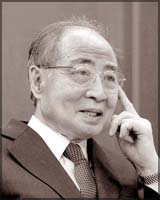How the West lost Sri Lanka
Don Wijewardana
******-----------
How the Western countries have treated Sri
Lanka in recent years is an object lesson in how not to manage foreign
relations. Their actions based on false premises and pandering to
pressure groups have resulted in working against their own long term
interest.
*******-----------
Ever since gaining independence in 1948, this island state in the
Indian Ocean has been playing an active role in international affairs
well beyond its size. It has been a committed member of the United
Nations contributing to its activities including peace keeping, a senior
member of the Commonwealth, and an active player in the non-aligned
movement, SAARC and many others.
Literacy
It has signed up to all the key United Nations conventions ranging
from the conventions on restrictions on the use of certain excessively
injurious weapons, to the elimination of all forms of discrimination
against women. With a high level of literacy Sri Lanka is among the few
functioning democracies in the region. These factors, along with its
strategic location in the world’s busiest sea route, make Sri Lanka a
useful ally for any country.
|

US Secretary of State Hillary Clinton |

Japanese Special Peace Envoy
Yasushi Akashi |

British PM Gordon Brown |
But historically, Sri Lanka has been identifying itself closely with
the Western world following four centuries of colonial rule starting
with the Portuguese and ending with the British.
It was a mutually beneficial relationship cemented by generous
economic assistance provided to the country. In time, with recurrent
fluctuations in the price of its commodity exports and sharp increases
in the price of essential imports such as oil, the dependence on Western
aid increased. Aid came in many forms: some bilateral, and much of it
multilateral, mainly from agencies such as the World Bank. Eventually
aid constituted an indispensable part of balancing the annual budget and
meeting the gap in external balance of payments.
The heavy reliance on aid allowed the donor community, initially, to
impose conditions which were ostensibly to promote economic growth.
It was such an effective tool for donors that the choices for
recipients were severely limited - accept the conditions or go without
aid. With no other alternatives, almost always countries opted to grin
and bear the pain, sometimes with severe domestic repercussions.
In time, donors realised the immense potential of this tool to extend
their influence beyond the economy to political, social and other
spheres.
Recent years also mark the upsurge in blatant disregard for human
rights in many parts of the world and addressing it has become a top
priority for W
Estern Governments.
Trying to capitalise on this concern were the INGOs scouring the
globe for ‘investment’ opportunities. Sri Lanka’s efforts to deal with a
terrorist group which had ravaged the country for three decades turned
out to be a fertile ground for them.
It was a soft touch compared with Iraq or Afghanistan or Darfur and a
pleasant place to live. ‘Human rights’ was the issue. The only missing
link, however, was information to back up a campaign. And that was
provided by the LTTE through cooked up data and doctored photos
broadcast to the world through their websites, television channels and
print media.
LTTE trap
Not only the gullible Governments, but organisations such as the
United Nations, the BBC and respected newspapers such as the New York
Times fell into the LTTE trap. It also became a haven for INGOs feeding
on each other.
Everyone was happy, except the Sri Lankans who felt they were hard
done by. However, their protests did not cut much ice since the well
tailored information dispensed by the LTTE fitted the human rights abuse
model like a glove.
Why allow facts to spoil a perfect story, especially when it came
neatly packaged without having to do any hard work and catered well to
your needs? The irony is this has been going on for over three decades
and continues to flourish even today unquestioned. Only a handful of
journalists took the time and effort to venture beyond the LTTE
propaganda.
Eliminate terrorism
With the first serious attempt by the Rajapaksa Government to
eliminate terrorism all the conditions were ripe for Western states to
clamp down the screws on Sri Lanka. And they did.
The series of demands concomitant to aid included coming up
immediately with a political solution, release of those held under the
prevention of Terrorism Act, devolution of power and the latest, a
ceasefire to allow the civilian hostages held by the LTTE to leave.
The Government has clearly spelt out its commitment to a political
solution underlining the fact that it was premature to negotiate until
the terrorist threat was eliminated. With regard to a ceasefire it has
pointed out over and over that the lull in fighting will be used by the
LTTE to rearm.
That is exactly what happened during the ceasefire agreement of
2002-2006 when the LTTE used it to build its military infrastructure
including, adding four new battalions, expanding naval capability - the
Sea Tigers, and establishing the nascent air force.
During the period it also built up its arsenal and established modern
communication systems all in preparation for war. During this period the
two parties met six times but the discussions were limited to
administrative matters and the LTTE walked out on flimsiest of excuses.
Negotiations were merely a cover for military build up. Any new
ceasefire would have ended the same way, the Government advised. But in
April, at the behest of the international community President Rajapaksa
allowed a 48-hour cessation of hostilities to allow the LTTE to release
civilians held hostage.
The only thing that happened was the LTTE shot at those who attempted
to leave and killed two soldiers. Only 28 people managed to escape.
So where is the logic for a ceasefire again? It is true that for ages
ceasefire has been used by warring parties as the mechanism to evacuate
innocent civilians caught up in the fighting. But in the case of Sri
Lanka these civilians are purposely held hostage by the LTTE as a human
shield to prevent the Armed Forces from attacking them.
Ceasefire
In fact the 160,000 that escaped from the clutches of the LTTE did so
not during a ceasefire: it was through combat operations of the
Government soldiers who pushed the LTTE cadres back facilitating the
civilians to leave. The only purpose a ceasefire could serve in the
circumstances is to help LTTE to buy time to regroup and prolong the
agony of those held in captivity.
In spite of this, the persistence of Western Governments and INGOs on
a ceasefire shows either a surprising lack of understanding of the
ground situation or a deliberate decision to ignore it. During the past
week Gordon Brown sent his Foreign Minister along with the French
counterpart to press the Government and another delegation of British
MPs followed immediately after. Canada has followed suit.
Demands
Hillary Clinton keeps on firing from a distance. Their mantra is
ceasefire. It is not surprising that the Sri Lankan Government has not
acceded to these demands. No sane Government on the verge of eliminating
the terrorists would.
It may also come as a surprise to these do-gooders that the
representatives from within the region, External Affairs Minister Pranab
Mukherjee of India, a country which has a greater stake in the issue
than any other, and Yasushi Akashi, Japan’s Special Envoy to the island,
who also visited the country around the same time did not make such
demands. Akashi stressed at the end of his three-day visit that there
was no link between the aid provided by Japan and progress in peace
efforts.
An important factor Western countries have overlooked in their
manipulations is that unlike in those days, when there was no
alternative to Western aid, now there are other donors who are willing
and able to step into the breach. As Jeremy Page of the Times noted
China’s aid to Sri Lanka jumped from a few million dollars in 2005 to
almost $1 billion last year, replacing Japan as the biggest foreign
donor. By comparison, the United States gave $7.4 million last year and
Britain just œ1.25 million.
Beijing also appears to have increased arms sales significantly to
Sri Lanka since 2007, when the US suspended military aid over the same
human rights issues.
According to Jane’s Defence Weekly in April 2007 Sri Lanka signed a
classified $37.6 million deal to buy Chinese ammunition and ordnance for
its army and navy. It is not China alone that helps Sri Lanka: there is
Japan, Russia, Iran, Libya and Vietnam in addition to India and
Pakistan.
There were rumours of Obama and Brown along with some INGOs urging
the IMF not to provide the standby arrangement of $1.9 billion to Sri
Lanka. What the West needs to realise is that the more they attempt to
clamp down the more they push Sri Lanka into the fold of China and other
friendly nations.
Suicide bombers
The duplicity of the West does not end there. By all accounts the
LTTE led by Prabhakaran is far more deadly than Al Qaeda. The Federal
Bureau of Investigation (FBI) has described it as the “most dangerous
and deadly extremists” in the world and ranked it ahead of Al Qaeda and
Hamas.
According to the agency advisory, the LTTE has perfected the use of
suicide bombers; invented the suicide belt; pioneered the use of women
in suicide attacks and murdered some 4,000 people in the past two years
alone.
It goes on to say that the LTTE’s “ruthless tactics have inspired
terrorist networks worldwide, including Al Qaeda in Iraq.” The FBI also
notes that the LTTE operatives have assassinated two world leaders, the
only terrorist organisation to do so. This is only a part of its resume.
Drug dealing, credit card fraud, human trafficking and recruitment of
child soldiers are in addition. For the 70,000 deaths he was responsible
for, the New York Times called Prabhakaran the Pol Pot of South Asia.
And now Prabhakaran and his top leaders are trapped in a five
kilometre stretch of land surrounded by Sri Lankan Armed Forces. If it
was Osama bin Laden who was cornered like this, will the US and UK still
call for a ceasefire? It is this deceit in applying double standards
that is a further factor in the West losing Sri Lanka.
Having come this far there is no doubt the Sri Lankan Government will
soon complete the task of eliminating the terrorist group.
Simultaneously the window of opportunity for the West to rethink its
strategy is rapidly dwindling.
The writer is an
economist and freelance journalist. Email: [email protected] |



